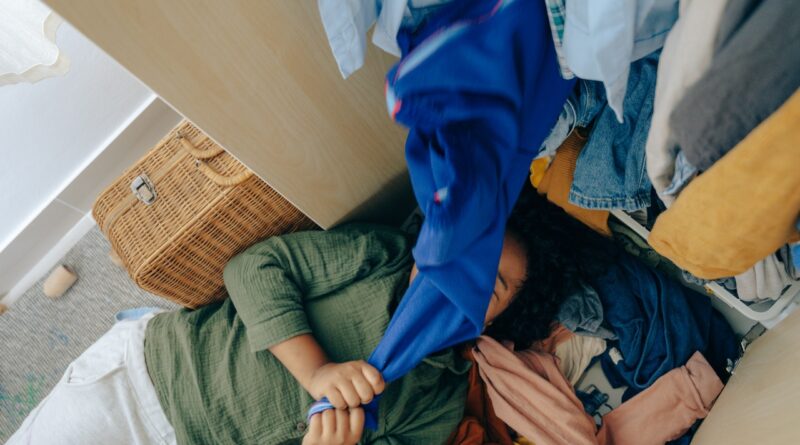Where to Start When Decluttering Your Home
A full home decluttering can seem like an intimidating task – and, quite often, the intimidation is warranted – as your house seems to have swallowed years, and even decades, of junk, out-of-use objects and general clutter.
One of the toughest things to figure out is where to start. Which jobs should you prioritise? Which rooms should you tackle first?
Luckily, we’re here to help, to ensure that your decluttering process is stress-less and successful.
How should I start organizing my house?
The first step in the decluttering process is to do nothing. No cleaning, no decluttering, no organizing. First, you need a plan – to break up the decluttering process into manageable chunks, and so that you know exactly what needs to be done (and what still has to be done, as you continue on your decluttering journey).
Set manageable goals.
To give an example of an unmanageable goal: ‘declutter the house’. It’s huge, it’s not specific, and it doesn’t allow you to monitor your progress as you go through the declutter.
On the other hand, if you split the task up into goals which you can complete within a reasonable amount of time – for example, a few hours to a day – then you’re more likely to be motivated to complete a task. These manageable goals can be organized into a decluttering checklist (see below).
Moreover, having a list of decluttering goals will allow you to predict how long the process will take, cutting out the inefficiency and potential frustration of trying to figure out what needs to be done next – plus, you can pick and choose items on the list depending on your mood and the amount of time you have to spare.
Create a decluttering system.
As you go through each drawer, each cupboard, each long-forgotten box at the back of the closet, you’ll need a system to be able to declutter, re-organize or throw out your belongings.
As an example, you could start by pulling everything out of the drawer/cupboard, then sort these things into ‘donate’, ‘throw away’ or ‘keep’ piles. Then, you can reorganize the ‘keep’ items into the space, in a system that makes the most sense to you.
However, this is only a suggestion – whatever system works best for your unique situation is the one which you should use, but it’ll save time if you have a repeatable system to rely on while decluttering each drawer, closet or room.
Here is a list of example decluttering goals which you can use to build your own checklist.
Kitchen:
Clean out fridge/freezer
Clean out and organize cupboards
Clean out and organize drawers
Remove unnecessary items from counter space.
Living room:
Clean out coffee table drawers.
Organize CDs/DVDs and throw away empty/unused CD/DVD cases.
Organize books and magazines and throw away any that aren’t needed.
Bedroom:
Sort clothes and shoes into the closet – or into a donation bag – based on whether they should be kept or donated.
Clean out and organize the reminder of the closet.
Clean out and organize the space under the bed.
Clean out and organize dresser.
Garage:
Sell/donate any electricals that aren’t in regular – or semi-regular – use.
Clean out and organize boxes in storage into ‘donate’, ‘throw out’ and ‘keep’.
Home Office:
Throw out – or organize and file – loose papers into a folder.
Organize bookshelves and donate unwanted books.
Bathroom:
Clear surfaces in the bathroom and replace ‘keep’ items in the cupboards.
Clean out and organize the cupboards around the sink.
Here are some more organizational tips to help you on your decluttering journey.
- If you’re confused about whether or not you should keep a possession, ask yourself truthfully: will this bring value to my life in the future if I keep it? If the answer is no, then throw it away or donate it. Don’t think about what the item cost you to begin with.
- If you’re finding it difficult to get motivated – or you don’t have a lot of spare time on a particular day along your decluttering journey – just declutter one drawer or cupboard, rather than trying to check a whole decluttering goal off your checklist.
- When you’ve sorted your belongings – and you have a significant ‘keep’ pile in your active decluttering location – make sure to group things which are similar, or that make sense to be organized together.
- Consider adopting a labelling system. If there are still things in your home which you need, but that are better stored in storage boxes or in Tupperware style containers, you could consider using labels. Not only will this allow you to quickly know the contents of these boxes – and so add to it if necessary, as the decluttering process continues – but it will help you to find your belongings in the future.
So, if you think you’re finally ready to begin your home decluttering journey, then just follow these steps and tips, to make your decluttering quick, stress-free, and effective.


Pingback: Where to Start When Decluttering Your Home – Honey Do List Solutions Blog